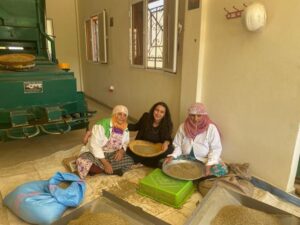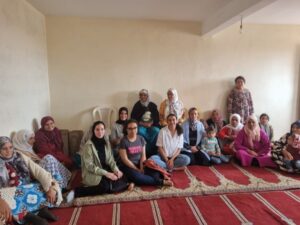
- August 18, 2023
ANNOUNCEMENT: FOCUS-GROUP FIELD SURVEYS
The 3G project team conducted field visits from May 8th to May 14th to gather information from pre-identified focus groups, collecting qualitative data on participants’ experiences and gender-related needs. Indeed, key actors from certain value chains and cooperatives were selected based on their involvement in actions related to the objectives of gendering Green Generation.
|
Municipalities |
Visited villages |
| Labrikiyine | Swalah Rmaili, Tnaja, Wlad El Haje |
| Ait Taleb | Ait Mbarak Msoud, Si Hsina , Laabidate |
| Sidi ali Labrahla | Mamna, Nzalat Boussabla, Soualh |
| Bouchane | Rgibate, Khtakhta, Bouchrite |
| Ait Hammou | Ait Hamou, Burate, Ait Yassine Shalhaouiate |
|
Sidi Abdellah |
Sidi Maftah 1, Sidi Maftah 2 |
Through these interviews and group discussions, project members were able to investigate and document the root causes of gender inequalities in the Rahamna province. They identified barriers that significantly hinder women from benefiting equitably from agricultural development projects. The diagnostic also examined income-generating projects carried out for rural women under the Green Morocco Plan, both successful and unsuccessful ones.
The findings provide examples of various challenges, including women’s limited access to resources like land, credit, extension services, and technology. Education and opportunities for decision-making are also an issue. Additionally, the surveys emphasized obstacles within Gender-Responsive Budgeting (GRB), such as a restricted comprehension of gender-related concerns in agriculture and a lack of data and statistics disaggregated by gender, among other factors.




